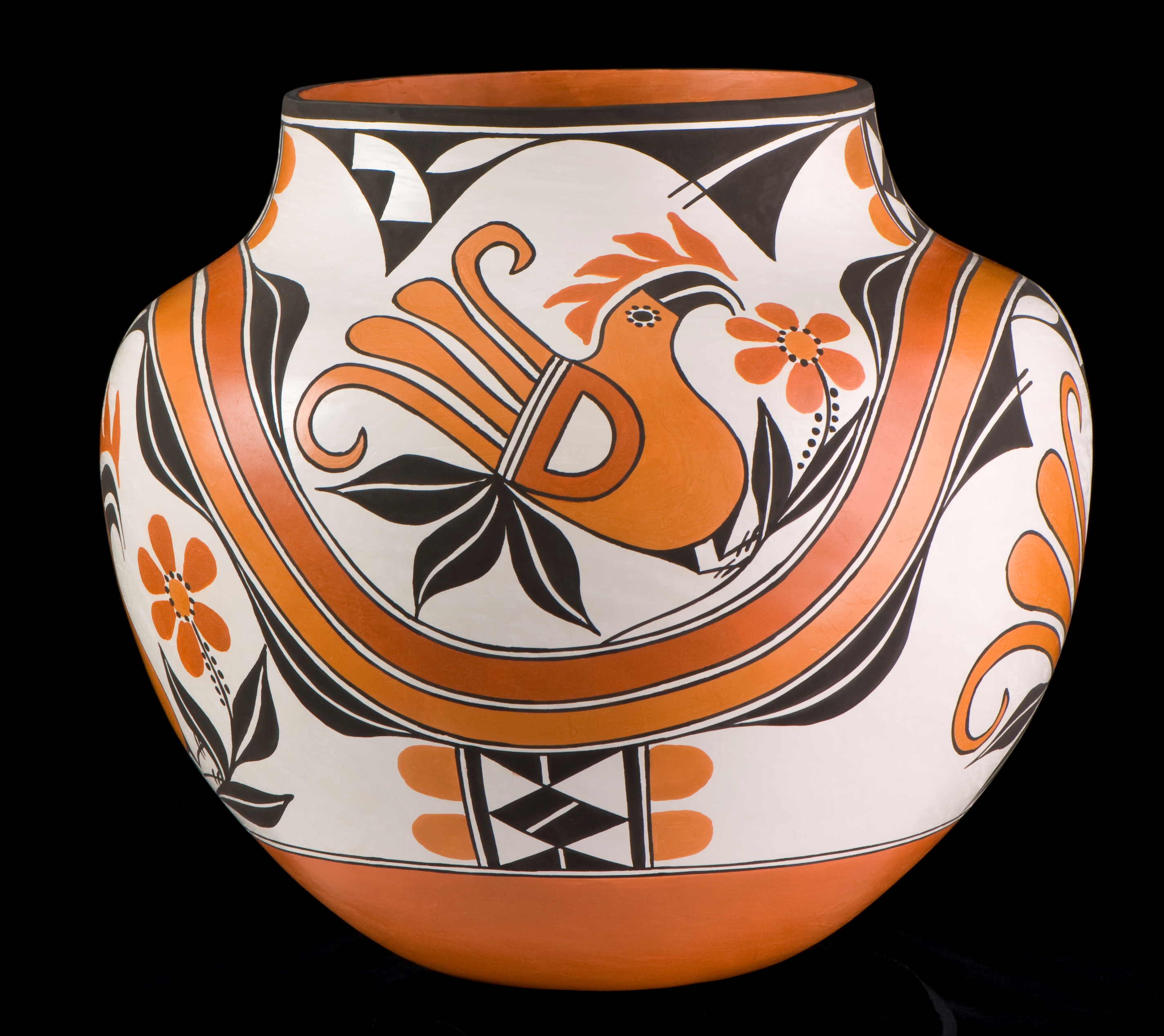There’s more to art than two dimensions, says Eric Singleton, curator at the National Cowboy Museum in Oklahoma City.
And he’s out to prove it with a new exhibition of ancient Native American ceramics.
“Art is not just painting on walls,” he says. “And to be able to paint on ceramics is equal to painting on canvas.”
Nor are Native American ceramics limited to the Navajo or Hopi from the Southwest and Great Plains. So Singleton has included a number of pieces from tribes in the Southeast, like the Cherokee and the Chickasaw. “The exhibition begins in about 3,000 B.C., with the first ceramic types identified on Stallings Island, Ga.,” he says.
It moves along through about 60 works, a number of which are contemporary. A timeline from the earliest pieces to the present contextualizes it all with ceramics from around the world.
“We want to provide a world view – not an Old World point of view and a New World point of view – but two Old Worlds,” he says. “It shows the quality of materials produced here at same time Caesar was crossing the Rubicon.”
All are clay-based, and while some were fired in kilns, most of the artisans used open-pit fires. “They used a mix, with shell and bone in with the clay,” he says. “They fired it at lower temperatures, and would take it out and engrave it.”
These were functional pieces, to be sure. But they were also used symbolically. “There were a multitude of purposes,” he says.
Southeastern Native Americans were looking at imagery from a tri-layered universe, with three worlds represented through symbols. There was the above world, then this world, and also the below world. “So there were symbols for all that, or there was a realm brought forth for ceremony or ritual,” he says. “The symbols have their own meaning and power.”
So here we have a strong demonstration of three-dimensional art in context.
The exhibition opens on August 30 and runs through May 10.
For more, go here.
[slideshow id=2081]

